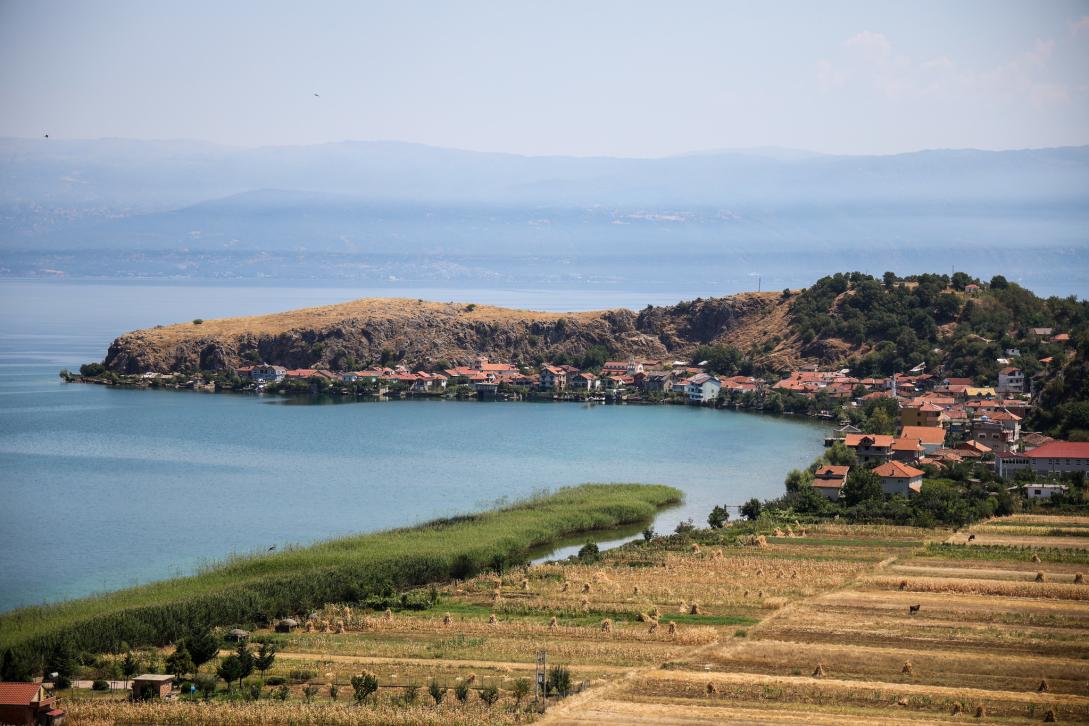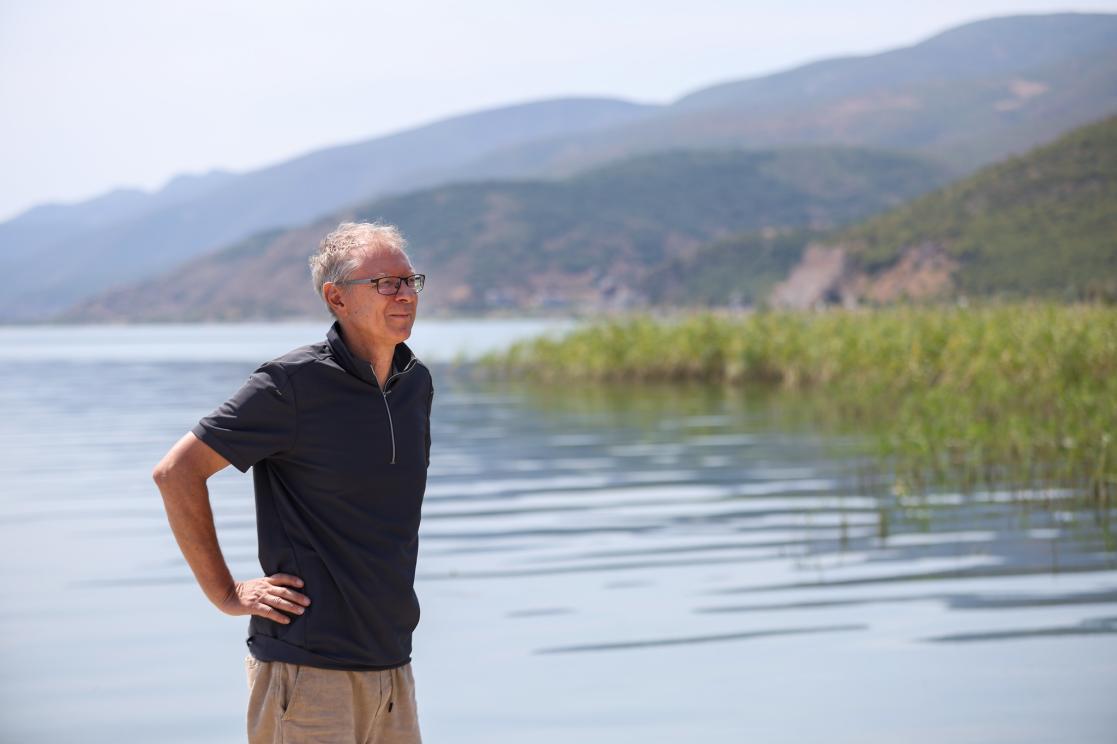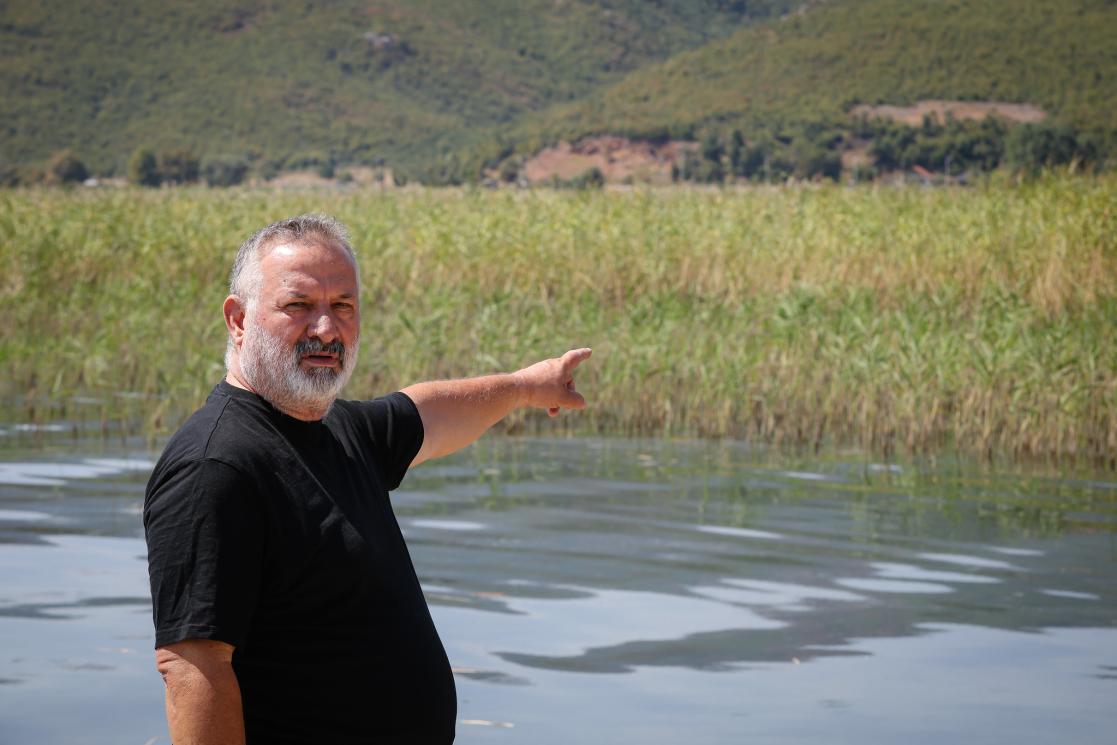Ancient Lin settlement reveals how farming spread to Europe

A settlement of around 30-40 houses, built with oak, pine, and large juniper trees, and home to approximately 400-800 people, is shedding light on how society transitioned from hunter-gatherers to farmers. Inhabited between 6200 BC and 4000 BC and located in Lin, Pogradec, this site is revealing how people lived around 8,000 years ago in Neolithic lake dwellings known as palafittes. A Swiss-Albanian archaeological expedition has confirmed that the site is one of Europe’s oldest lakeside settlements. It is also one of the first places where agriculture spread to Europe from the Near East, initially through the Mediterranean and then northward across the continent.
The head of the project, Professor Albert Hafner from the University of Bern, explains that this does not mean the site was continuously inhabited for 2,000 years. Instead, several villages were built at this location over time. “The population used about 300 trees to construct the settlement, which amounts to an entire forest. The main aim of the project is to understand how agriculture developed. Organic layers in wetland archaeological sites preserve materials much better, providing crucial information about how agriculture spread to Europe. We are tracing a pivotal moment in this transition,” he says, as his team continues an underwater excavation in Lake Ohrid near Pogradec.

ExploProject
The research is funded by the European Union under the EXPLO project, which aims to explore the dynamics and causes of prehistoric land use changes in the cradle of European farming.
“We knew the region had significant potential for archaeological research into the origins of agriculture. In archaeological terms, this is a major project, involving four professors, three countries, the universities of Bern, Oxford, and Thessaloniki, and more than 200 people, including archaeologists, divers, and technical support staff. The research requires substantial resources—boats, vehicles, even setting up a laboratory—and it could not happen without sufficient funding. Projects of this scale are only possible with grants like these,” says Professor Hafner.

EU Delegation to Albania
Given that the lakeshore during Neolithic times is thought to have been close to today’s road, archaeologists have been excavating two areas at a depth of 3-4 meters. “The site spans 300 meters in length and 200 meters in width, or about 6 hectares. Today, part of the site is underwater, while part is on land, so we are excavating both areas,” he notes.
The trees used to build the palafitte houses and palisades are now being analyzed to date the site using their rings. “We employed two methods: carbon dating and dendrochronology—a term derived from ‘dendro,’ Greek for trees, and ‘chronology,’ the study of time. By examining tree rings, we can determine the site’s age. We discovered two palisades with a 500-year difference between them in Lin,” Professor Hafner explains. While radiocarbon dating has an accuracy of centuries, dendrochronology is more precise, potentially pinpointing specific years.
Similar settlements in Switzerland are already UNESCO World Heritage Sites, though they are 2,000 years younger. Professor Hafner believes the Lin site also has this potential but suggests that, since Lake Ohrid is already a UNESCO World Heritage Site, “it would make more sense to integrate this site into the existing World Heritage project for the lake.”

ExploProject
Adrian Anastasi, a member of the Albanian Institute of Archaeology, has worked for years on underwater sites in both sea and lake environments. He notes that they chose this site over six similar ones in the region because it was endangered by treasure hunters, but last year’s findings exceeded expectations.
“This year, we confirmed what we discovered last year. Initially, we thought the site was 3 hectares, but we now have data showing it covers 6 hectares. We are working on a site plan and scale drawing and aim to answer several questions, such as why people chose to build houses in the lake, which is more challenging than building on land. We also want to determine whether the plans were rectangular or circular and how they were oriented relative to the lake,” says Anastasi.

EU Delegation to Albania
Ceramics and bones have also been found during the excavations, where several students from Germany, Austria, France, and Albania have joined forces, uniting a European team to preserve these prehistoric findings in Europe.
BACKGROUND INFORMATION
The EXPLO project has received funding from the European Reserach Council (ERC) under the European Union’s Horizon 2020 research and innovation programme. It proposes a novel interdisciplinary approach to investigate key questions regarding the interaction between past human ways of life, land use and the wider environment through a unique combination of archaeological, biological and dynamic mathematical modelling approaches. Archaeological sites in lakes of the southern Balkans (Greece, Albania and North Macedonia) provide an excellent opportunity to investigate rich archives of societal and environmental change in the cradle of European farming. Natural lake sediments and submerged prehistoric settlements offer exceptional preservation conditions and uniquely holistic insights into past anthroposphere, biosphere and geosphere dynamics. On-site information from excavations will be combined with off-site palaeoenvironmental data from the same lakes to investigate past adaptation strategies to the environment as well as the effects of past societies on their environments. Dynamic models integrating archaeological contexts and palaeoenvironmental data will open up the opportunity to investigate vulnerability, resilience, tipping points and thresholds of ancient agrarian economies, with implications for future food systems under a rapidly changing climate.





